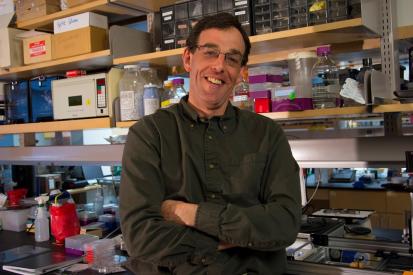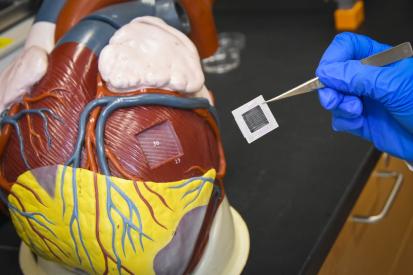The overall objective of my research is to create bioengineered scaffolds to enhance the regeneration of damaged tissues and organs. Specifically, my laboratory uses biomimetic design strategies and novel fabrication processes to develop three-dimensional constructs that emulate native tissue architecture and cellular microenvironments. We use these scaffolds to characterize the roles of extracellular matrix (ECM) cues and topographic features in modulating cellular functions, including adhesion, migration, proliferation, differentiation, and tissue remodeling. For example, we are investigating the design of microfabricated basement membrane structures to direct keratinocyte function and enhance the performance of bioengineered skin substitutes. We are also designing novel biopolymer microthreads that are being used to deliver stem cells and to facilitate myocardial or skeletal muscle regeneration. These scaffolds have been used, as well, to develop in vitro model systems to predict cellular and tissue responses to implantable biomaterials for the repair of soft tissues including tendon and ligament.
In the classroom, I enjoy teaching students about the fundamentals of biomaterials science and cell-biomaterial interactions to design implantable biomaterials that promote functional tissue restoration. I particularly enjoying working with teams of students on capstone design projects to develop biomaterials scaffolds and benchtop assays to characterize cell-biomaterial interactions that can be used to solve clinical problems related to wound healing and tissue regeneration. At the graduate level, I enjoy mentoring master’s and doctoral students; helping them develop into independent scientists and engineers who will contribute to solutions of various healthcare problems.
The overall objective of my research is to create bioengineered scaffolds to enhance the regeneration of damaged tissues and organs. Specifically, my laboratory uses biomimetic design strategies and novel fabrication processes to develop three-dimensional constructs that emulate native tissue architecture and cellular microenvironments. We use these scaffolds to characterize the roles of extracellular matrix (ECM) cues and topographic features in modulating cellular functions, including adhesion, migration, proliferation, differentiation, and tissue remodeling. For example, we are investigating the design of microfabricated basement membrane structures to direct keratinocyte function and enhance the performance of bioengineered skin substitutes. We are also designing novel biopolymer microthreads that are being used to deliver stem cells and to facilitate myocardial or skeletal muscle regeneration. These scaffolds have been used, as well, to develop in vitro model systems to predict cellular and tissue responses to implantable biomaterials for the repair of soft tissues including tendon and ligament.
In the classroom, I enjoy teaching students about the fundamentals of biomaterials science and cell-biomaterial interactions to design implantable biomaterials that promote functional tissue restoration. I particularly enjoying working with teams of students on capstone design projects to develop biomaterials scaffolds and benchtop assays to characterize cell-biomaterial interactions that can be used to solve clinical problems related to wound healing and tissue regeneration. At the graduate level, I enjoy mentoring master’s and doctoral students; helping them develop into independent scientists and engineers who will contribute to solutions of various healthcare problems.
Scholarly Work
Micropatterned Fibrin Scaffolds for Cardiomyocyte Alignment, English, E.J., Samolyk, B., Gaudette, G.R. and Pins, G.D., J Biomed. Mater. Res. A: 64 (1), 1-13, 2023
Skeletal muscle tissue engineering: biomaterials-based strategies for the treatment of volumetric muscle loss, ME Carnes, GD Pins, Bioengineering 7 (3), 85
“Horseradish peroxidase-catalyzed dityrosine crosslinking of fibrin microthread scaffolds”, *- Carnes, ME, Gonyea, C.R., Mooney, R.G., Njihia, J.W., Coburn, J.M. and Pins, GD., Tissue Eng. C. Methods, 2020, May 2, [Epub ahead of print], PMID: 32364015.
“Etching anisotropic surface topography onto fibrin microthread scaffolds to guide myoblast alignment”, *- Carnes, ME and Pins, GD., J Biomed Mater Res B Appl Biomater. 2020, Jul;108(5):2308-2319, PMID: 31967415
Creation of a Contractile Biomaterial from a Decellularized Spinach Leaf Without ECM Protein Coating: An in vitro study”, -Robbins, E.R., Pins, G.D., Laflamme, M.A., Gaudette, G.R., “ J Biomed. Mater. Res. Part A, 2020, Apr 22. doi: 10.1002/jbm.a.36971

